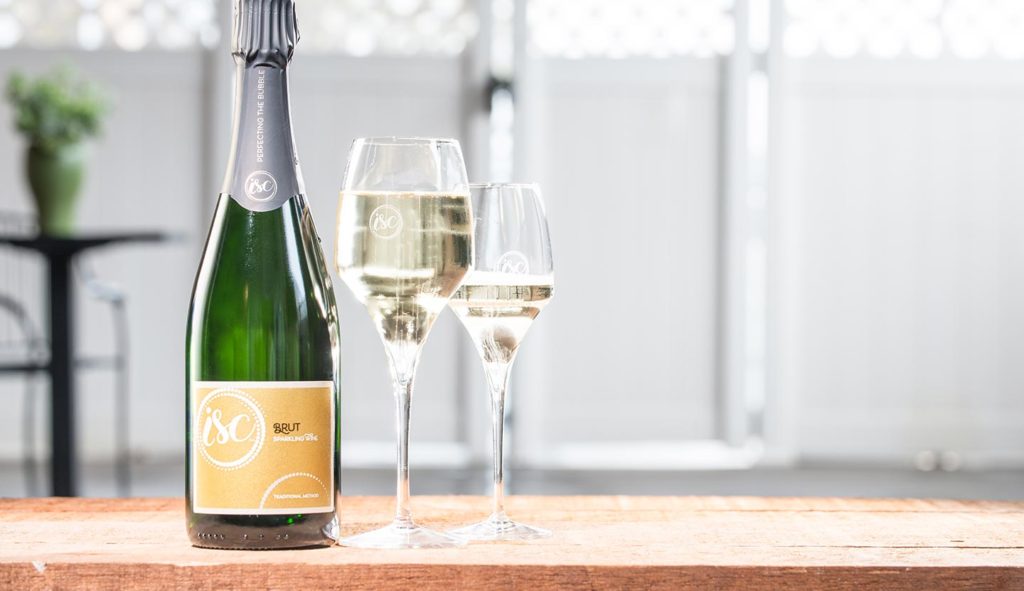We selected three of our favorite ISC traditional method sparkling wines for you to experience in one flight – the ISC Experience Flight. We recommend you try them in this order.
- ISC Brut – Light & crisp, yet bold & full-bodied, our signature Brut stands up to its name. Like liquid gold, it’s a true classic. traditional, yet exciting. Great for any occasion. Highly recommended for toasting and hosting. Pairing ideas: oysters, bratwurst, jambalaya, pecan pie.
- Brut Ombré Rosé – Our award-winning Brut Ombré Rosé features hints of raspberry & great acidity. Subtle color variations make each vintage unique. Try it with roasted chicken or turkey, fresh fruit, Chicago-style hot dogs or dark chocolate.
- Demi Sec Rosé – With a hint of sweetness, this bold little rosé brings a depth of color & flavor to delight your senses. Hints of chocolate, cherry, and cinnamon underscore a slightly fruity first layer. Pairing ideas: BBQ ribs, garlic chicken, s’mores, or fruit-filled pastries.
Why Traditional Method?
The attention to detail involved in Traditional Method is unmatched compared to other winemaking methods. It is the original process developed to create sparkling wine, and each bottle is personally handled from beginning to end.
For centuries, the Traditional Method has been the only way to make the best sparkling wine. Although more time-consuming and labor-intensive, when it comes to quality, we wouldn’t have it any other way.

The Vineyard
The perfect bubble begins at bud break. The grapes are nurtured and then harvested at just the right moment.

The Pressing and Primary Fermentation
The grape clusters bypass the crusher and go directly into the press. Delicate pressing yields premium juice. Juice is slowly fermented for 1-2 weeks.

The Blend
After primary fermentation, we blend wines from different grapes, vineyards and vintages. This blend is orchestrated so vintage after vintage expresses the specified vision and style of ISC.

The Tirage
Sugar and yeast are added and each bottle is sealed. The yeast converts the sugar to alcohol and CO2, thereby creating the signature bubbles in sparkling wine.

En Tirage
The bottles are aged in contact with lees in cool, dark caves for many months. This creates the unique flavors and structure we desire for each vintage.

The Riddling
A critical step, riddling is the process where each bottle is turned daily to allow for the yeast sediment to slide down into the neck.

The Disgorgement
After freezing the sediment in the neck, each bottle is uncapped and the frozen pellet of sediment shoots out of the bottle leaving behind clear sparkling wine.

The Dosage
Some of the sparkling wine is lost during disgorgement, and the winemaker uses this opportunity to “top off” the bottle by adding a unique liqueur blend to create the signature vintage.

The Corking, Caging, and Mixing
Each bottle is corked and caged. The dosage is integrated with the wine by mixing.

The Labeling
Each label reveals the life of the wine. Vintage: Year of harvest. Batch #: Month and year of tirage and includes the bottle number in sequence of disgorgement. Disgorgement Date: Date of disgorging.

Bubble Because
Now the bottle is ready to sip and enjoy. Cheers!

